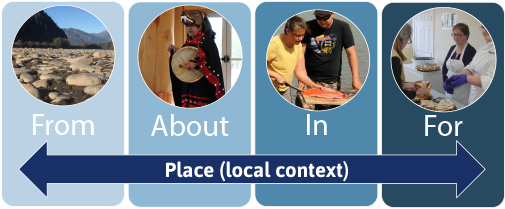WHAT IS IT?

Experiential learning means engaging with learners in direct experience and focused reflection to increase knowledge, develop skills, clarify values and develop people’s capacity to contribute to their communities.
Place-based learning connects classroom to learning from, about, in, and for the local environment, cultures, history, economy and politics.
HOW DO WE DO IT?